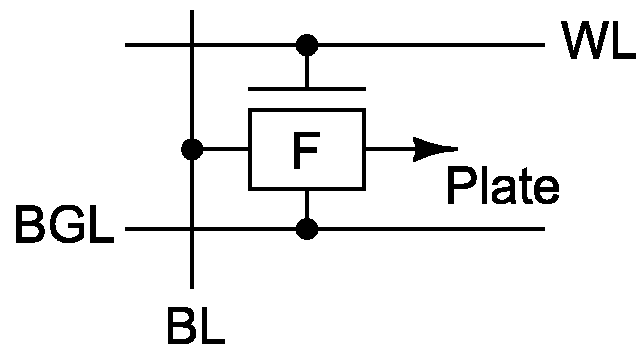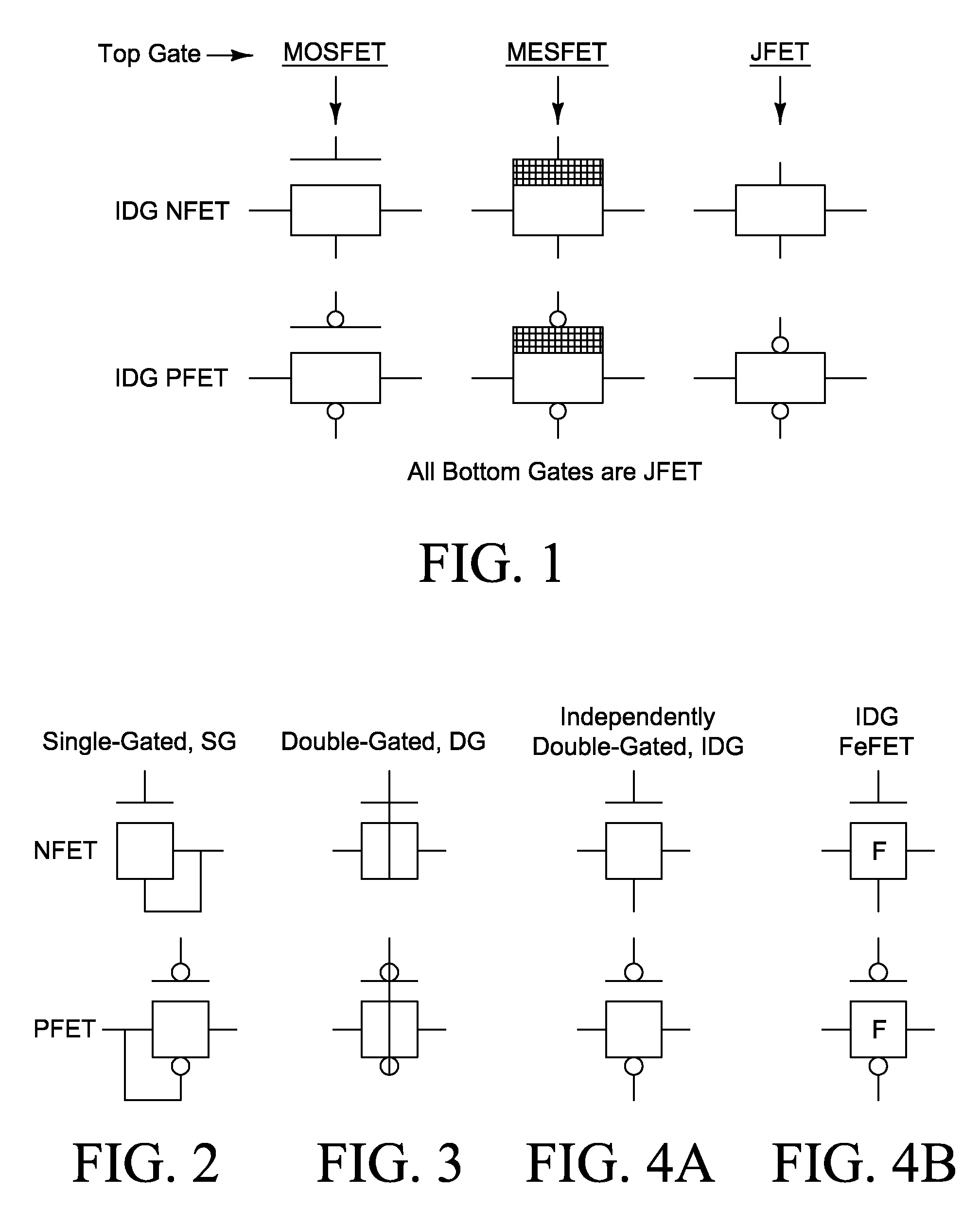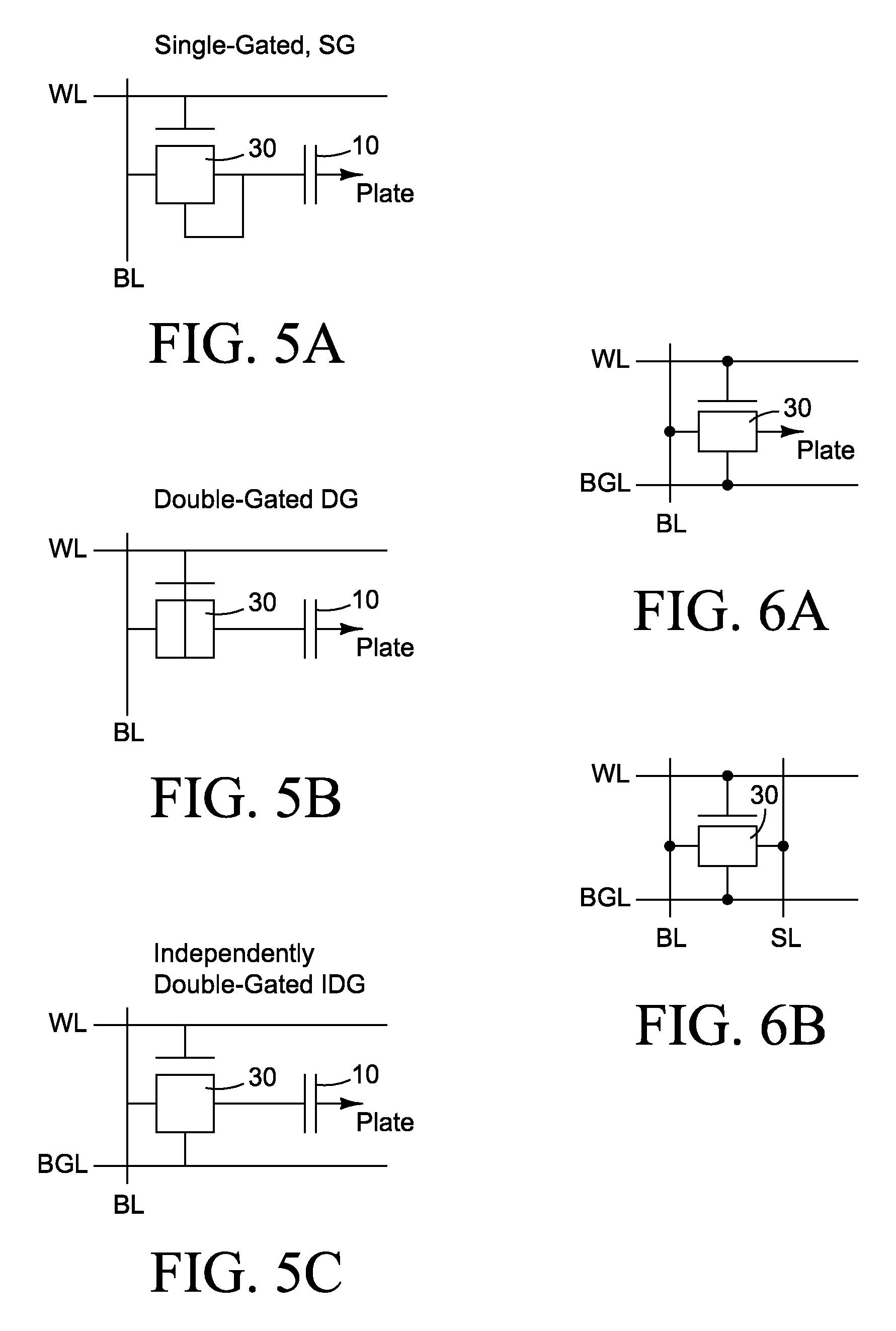Independently-Double-Gated Transistor Memory (IDGM)
a transistor memory and independent technology, applied in the direction of digital storage, semiconductor devices, instruments, etc., can solve the problems of increasing the number of ram required, increasing the complexity of computer software programs, and requiring a large amount of ram
- Summary
- Abstract
- Description
- Claims
- Application Information
AI Technical Summary
Benefits of technology
Problems solved by technology
Method used
Image
Examples
Embodiment Construction
[0079]A variety of RAMs using conventional single-gated transistors are available in research and / or production in both volatile and non-volatile forms. Some of the more conventional of these are Static SRAM, Dynamic DRAM, and NOR- and NAND-Flash Memories. More recent developments include Ferroelectric FeRAM, Magnetic MRAM, Ovonic Unified Memory (OUM) under development by Ovonyx, Inc., and Phase Change PCRAM. Each of these forms of RAM can be improved in various ways by the incorporation of a second gate in each transistor used in the memory cell. Additionally, this second gate may be connected in a variety of useful configurations. The present invention describes modifications to existing DRAM, Flash, and FeRAM cell circuits to incorporate a second gate.
[0080]All known existing memory cells utilize single-gated transistors. Some transistors that are called “double-gated” are in use but with the two gates simply tied together. The present invention involves the application of any In...
PUM
 Login to View More
Login to View More Abstract
Description
Claims
Application Information
 Login to View More
Login to View More - R&D
- Intellectual Property
- Life Sciences
- Materials
- Tech Scout
- Unparalleled Data Quality
- Higher Quality Content
- 60% Fewer Hallucinations
Browse by: Latest US Patents, China's latest patents, Technical Efficacy Thesaurus, Application Domain, Technology Topic, Popular Technical Reports.
© 2025 PatSnap. All rights reserved.Legal|Privacy policy|Modern Slavery Act Transparency Statement|Sitemap|About US| Contact US: help@patsnap.com



